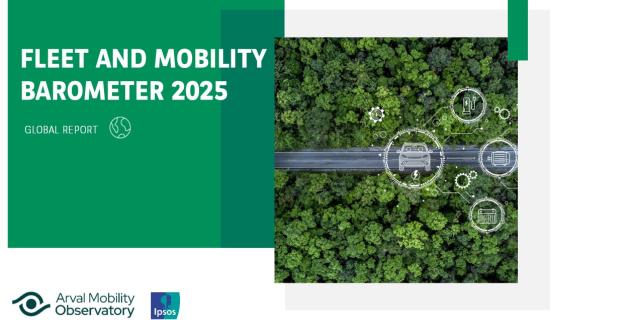Telematics: Gathering Essential Vehicle Data
Paris, 18th of May 2020
Telematics solutions are a key part of any fleet manager’s toolbox as well as a powerful instrument for any driver. Through connectivity, you can better follow and monitor vehicles, optimize operations, and enhance driver safety.
The literal definition of telematics is "transfer of computerized information over distances". The level of data that can be transferred varies greatly, subject to the level of granularity accepted by companies and drivers, always framed by local and European regulations.
What data can the on-board sensors gather?
Modern-day telematics sensors provide data on maintenance needs, driver behavior, positioning and a better understanding of fuel spend.
By monitoring the Total Cost of Ownership (TCO) factors, telematics systems can help fleet decision makers bring down operating costs, enhance business growth and quantify the impact on the environment. Bidirectional systems can even update routes and communicate with the driver - allowing entire business processes to be optimized while limiting carbon footprint, and giving tips for adapting cars models to driver’s usage.
According to the last Arval Mobility Observatory Barometer, 14% of SMEs and 29% of large and very large companies use telematics in their day-to-day operations. But how to increase the success of telematics? It is a matter of total transparency in the collection and usage of data. Fleet managers, telematics providers and leasing companies should support drivers in their learning curve.
Imagine the benefits of being able to predict every vehicle's maintenance needs? Well, telematics can open new horizons! For example: one vehicle off road (VOR) can cost up to €600 per day and have an impact on your client satisfaction. When you realize that vehicle downtime is a significant drain on any fleet's productivity and earning potential, you can clearly see the benefit of having the necessary information early.
Drivers and fleet managers can prevent breakdowns and schedule preventative maintenance at less demanding times, keeping vehicle utilization high and insurance premiums potentially lower.
Fuel consumption data coupled with routing and external traffic information can help amend transit schedules, optimizing costs, delivery and journey times.
No matter the size of the fleet, the most valuable and vulnerable part of any business is its employees.
When telematics are properly implemented and explained, employees and drivers can understand and apply the benefits for their own usage: erratic braking and acceleration can be a sign of unsafe driving, stress or tiredness as well as lead to abnormal fuel costs, and speed up tire wear. Both Fleet managers and drivers can make a difference: one may push adapted training, the other could adjust their own driving behavior.
Modern technologies, including Advanced Driver Assistance Systems (ADAS), can also help increase attention: many systems are designed to keep drivers holding hands on the wheel and keeping eyes on the road.
Connected cars bring additional value to fleet managers and drivers. As such, using telematics is not only a matter of locating cars and optimizing costs, it is also a way to improve safety and driver behavior while generating less pollution and improving CO2 footprint. Moreover, the main tools provide you with ready and easy to use KPIs follow-up and reporting, helping to quantify efforts for the community, as well as prepare your Annual Corporate Social Responsibility report, etc..
Is your fleet reaping the benefits of telematics or are you still trying to get to grips with it?











